Only 4 miles across the Mobile Bay from the Fort Morgan peninsula is Dauphin Island. Mobile Bay Ferry provides transportation to the island at a cost of $18/vehicle plus $6 per adult for passengers in the car. The drive to Dauphin Island from the Fort Morgan peninsula is about 100 miles and takes about 2 hours. The ferry can hold about 25 vehicles so it is suggested that you arrive 30 minutes prior to departure (no reservations, first come/first serve).
Two observation decks on the ferry enables travelers to enjoy the views on the bay. Sand Island Lighthouse is about three miles west of Dauphin Island at the entrance of Mobile Bay. Several lighthouses have been built and destroyed at this location, but this one (132’ tall) was built in 1864. Continuous erosion of Sand Island places this lighthouse high on the Lighthouse Digest Doomsday List. Many oil rigs are in Mobile Bay and oil tankers that we saw during the ferry ride.
Fort Gaines has guarded the entrance to Mobile Bay for more than 150 years.
Located about .25 miles from the ferry terminal, our first stop on Dauphin Island was Fort Gaines.
Near the entrance to the historic site is a keel section of a ship built in the 1800s or earlier. It washed ashore during a 1998 hurricane, but the name and history of the ship have been lost to the bay.
In the early 1700s, a French colony was established on Dauphin Island. It was the capitol of the Louisiana Territory during this period. During the next century it switched hands from France to Great Britain, Spain, and, finally, by the US in 1813. Around that time, it was determined (by the US government) that an extensive system of national defense was needed. Over the next 40 years, work on the fort started and stopped until 1861. Fort Gaines played a major role in the most important naval conflict of the Civil War, the Battle of Mobile Bay.
The 35’ wide dry moat (with drainage system) helped protect the fort from the enemy. The Sally Port is the original tunnel into the fort.
Picking up a self-guided tour brochure at the gift shop (where you pay the entrance fee of $8/adult), we continued onto the fort parade ground. Cannon were more easily moved to the terreplein (gun platform on the second tier) via the South Gun Ramp (there is a second ramp on the north side of the fort).
Guns were mounted on carriages on the circular bases. The serpentine brick wall was designed to protect both the guns and the gunners. The cannon on the Southeast Bastion is pointed toward Sand Island Lighthouse, marking the entrance to Mobile Bay. The East Bastion faces Fort Morgan, also across the 3-mile entrance to the bay.
Guns were mounted on carriages on the circular bases. The serpentine brick wall was designed to protect both the guns and the gunners. The cannon on the Southeast Bastion is pointed toward Sand Island Lighthouse, marking the entrance to Mobile Bay. The East Bastion faces Fort Morgan, also across the 3-mile entrance to the bay.
The building on the right was the guardhouse (now a gift shop). The one on the left was the commandant’s office and orderly room (now restrooms).
Fort Gaines was upgrades (1893-1903) with the addition Battery Stanton. Three 6-inch “disappearing” cannon were installed in the battery. We have seen this configuration in other forts of this era. Each cannon was on a carriage that was lowered for loading and then raised above the wall for firing. Small rooms on the first floor had tracks on the ceiling used for hauling the ammunition in slings.
A tunnel led from the bastion to the magazine (where gunpowder, shots, and shells were stored) below.
The latrine (view from the bastion) was accessible via a tunnel from the courtyard and doors on either side. The 10-seater was designed with a culvert to the bay which allowed the incoming/outgoing tide to wash out the “toilets” every day. Clever design!
Along the western wall of the fort were the blacksmith shop and fort bakeries. They featured a 12’ oven, several smaller ovens and storerooms for food.
Fort supplies were housed in the Quartermaster’s offices.
The museum showcases the history of the area, in general, and the fort. Very impressive.
Originally three stories, this building was officers’ quarters. The top two floors were destroyed during the Battle of Mobile Bay. The enlisted men’s barracks (outside the walls) were also destroyed during the battle.
Next to it is the kitchen courtyard and officers’ kitchen. There are two large cisterns at each end of the courtyard (covered with slate).
The anchor in the courtyard is from Admiral Farragut’s flagship, the USS Hartford, during the Battle of Mobile Bay in 1864. It was a significant victory for the Union near the end of the Civil War. Farragut famously said, “Damn the torpedoes, full speed ahead,” when crew warned him of the mines placed in the bay by the Confederacy. 3,000 troops had landed on the western end of Dauphin Island, as well. After several days of fierce fighting on land and sea with many causalities, the Confederates surrendered.
The fort was a Coastal Artillery unit and an anti-aircraft gunnery school during WWI. It was used as an Alabama National Guard site and US Coast Guard base during WWII.
After our tour of the fort, we hopped in the car to see more of Dauphin Island.
For additional information about Fort Gaines, go to www.dauphinisland.org/fort-gaines.
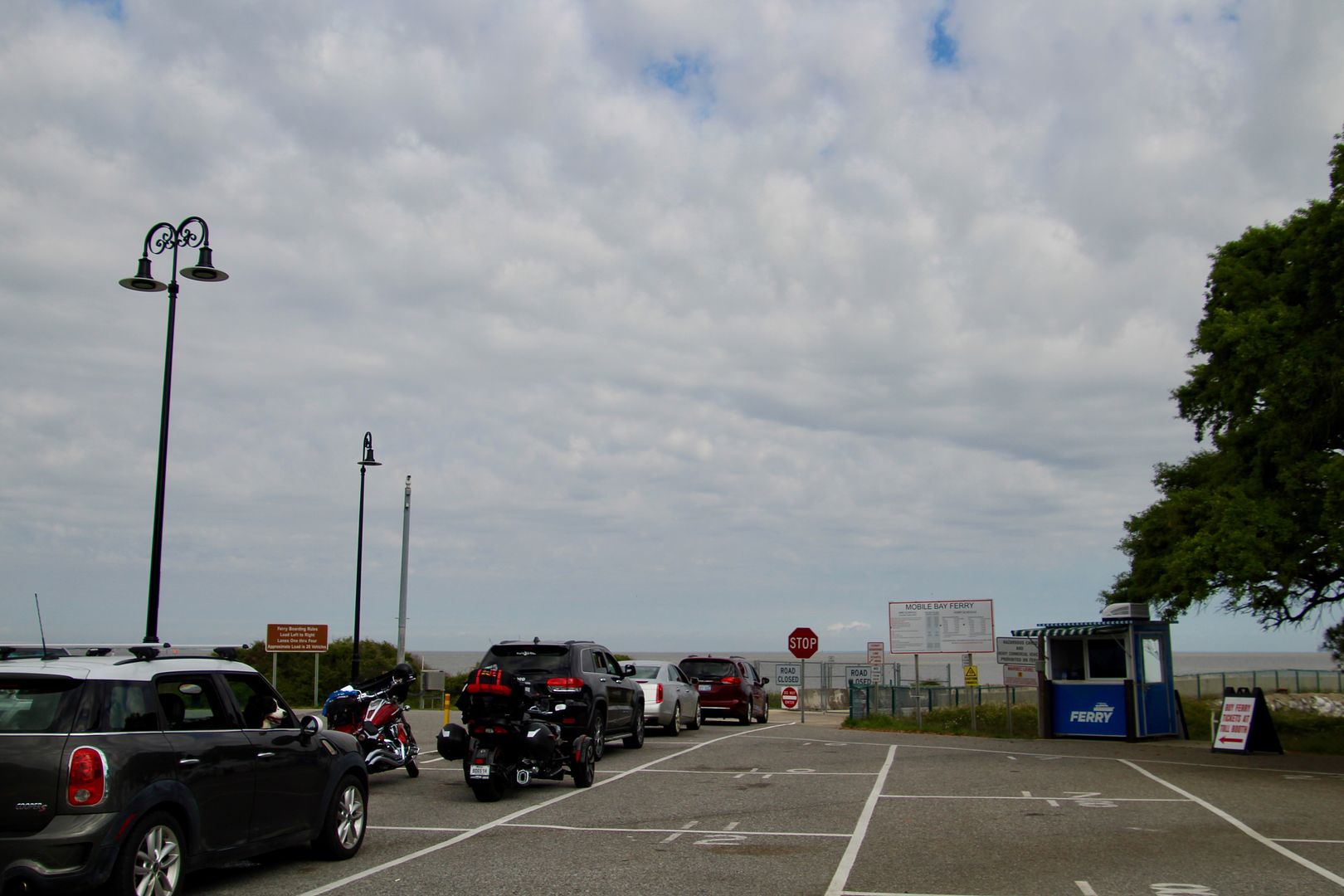
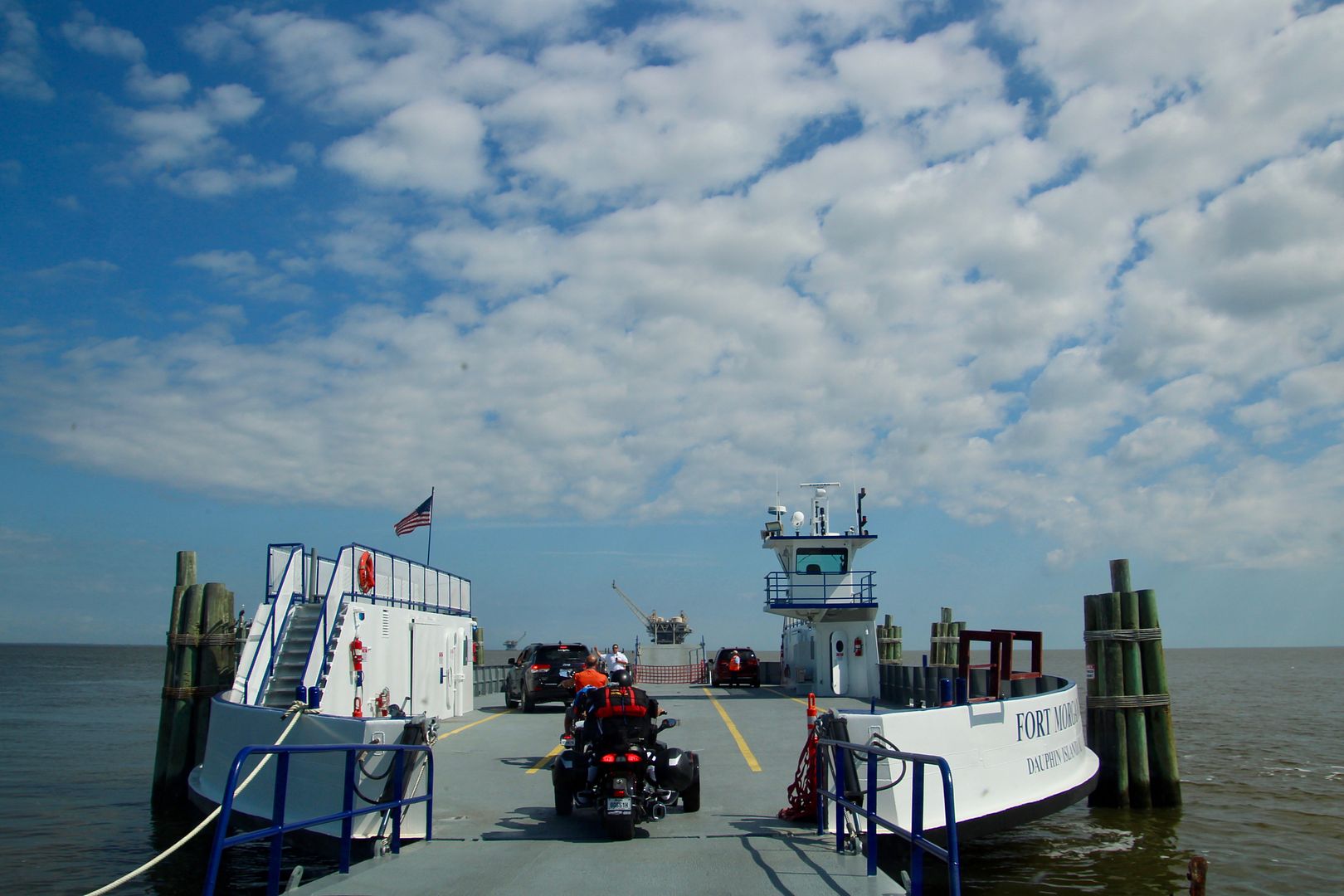
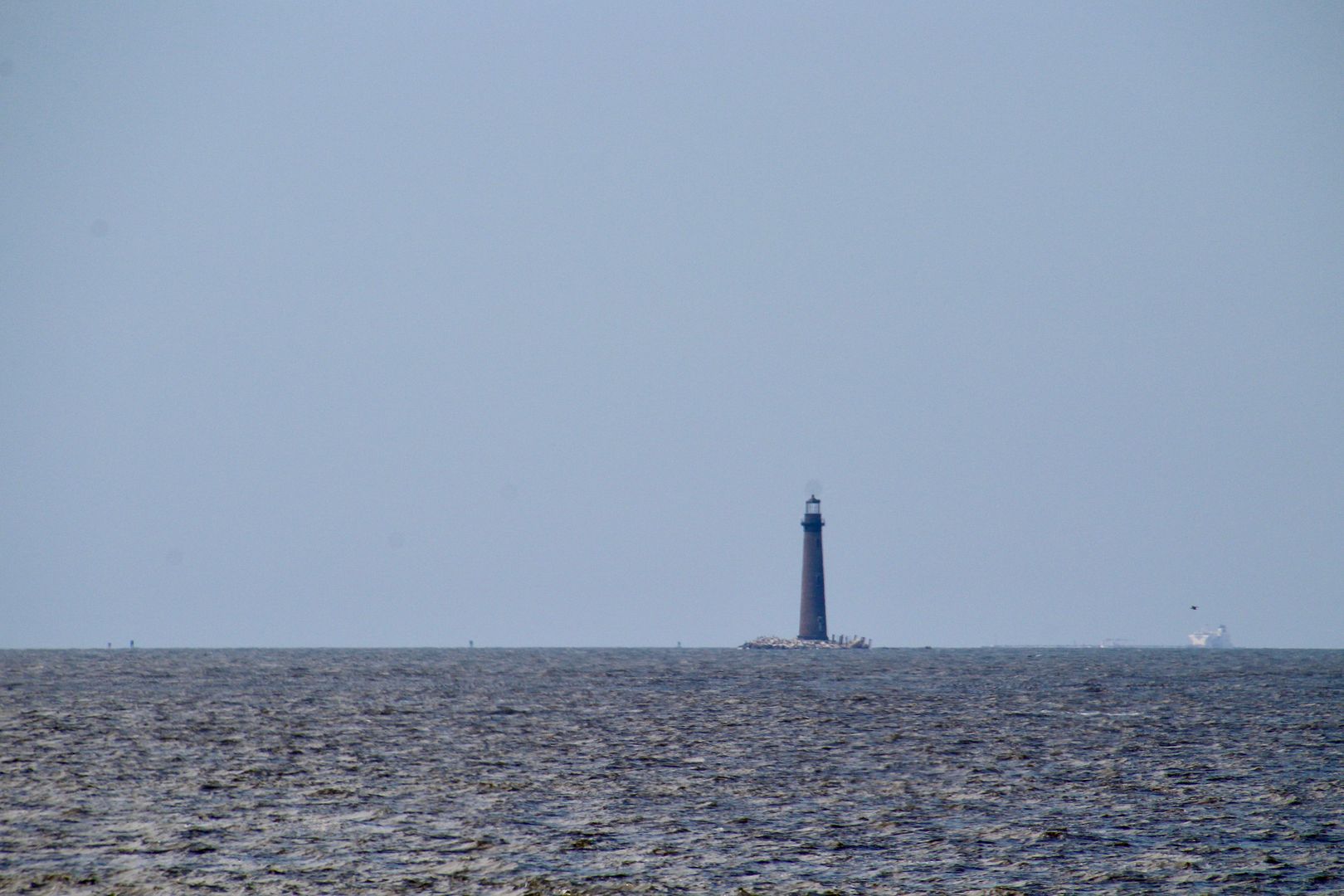
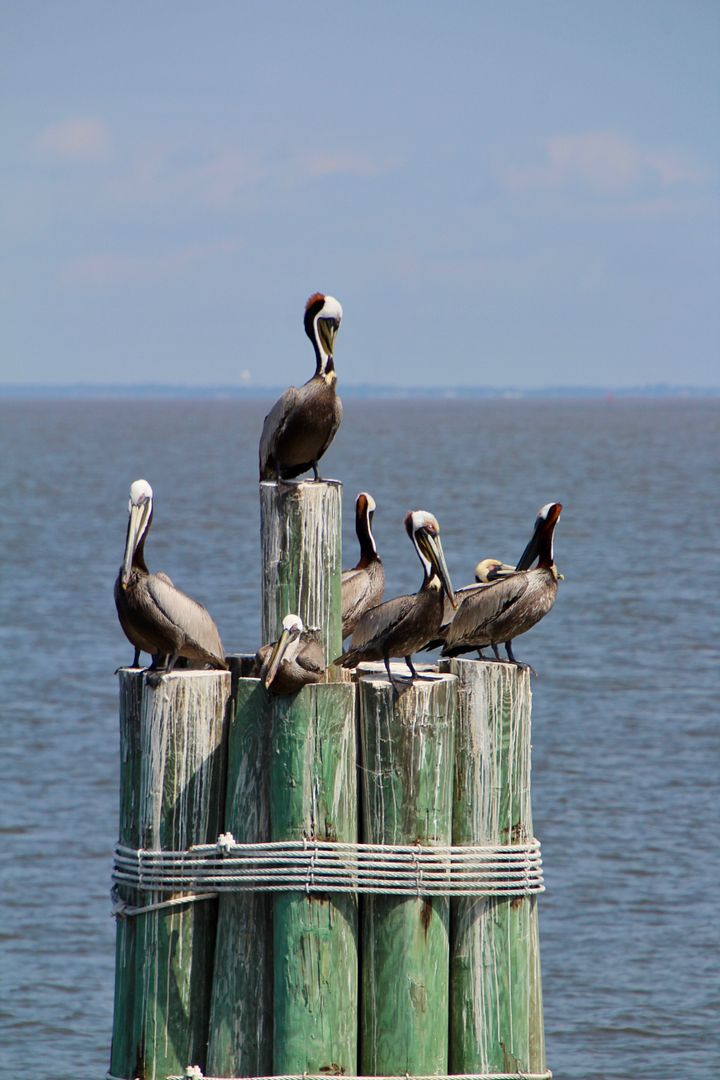

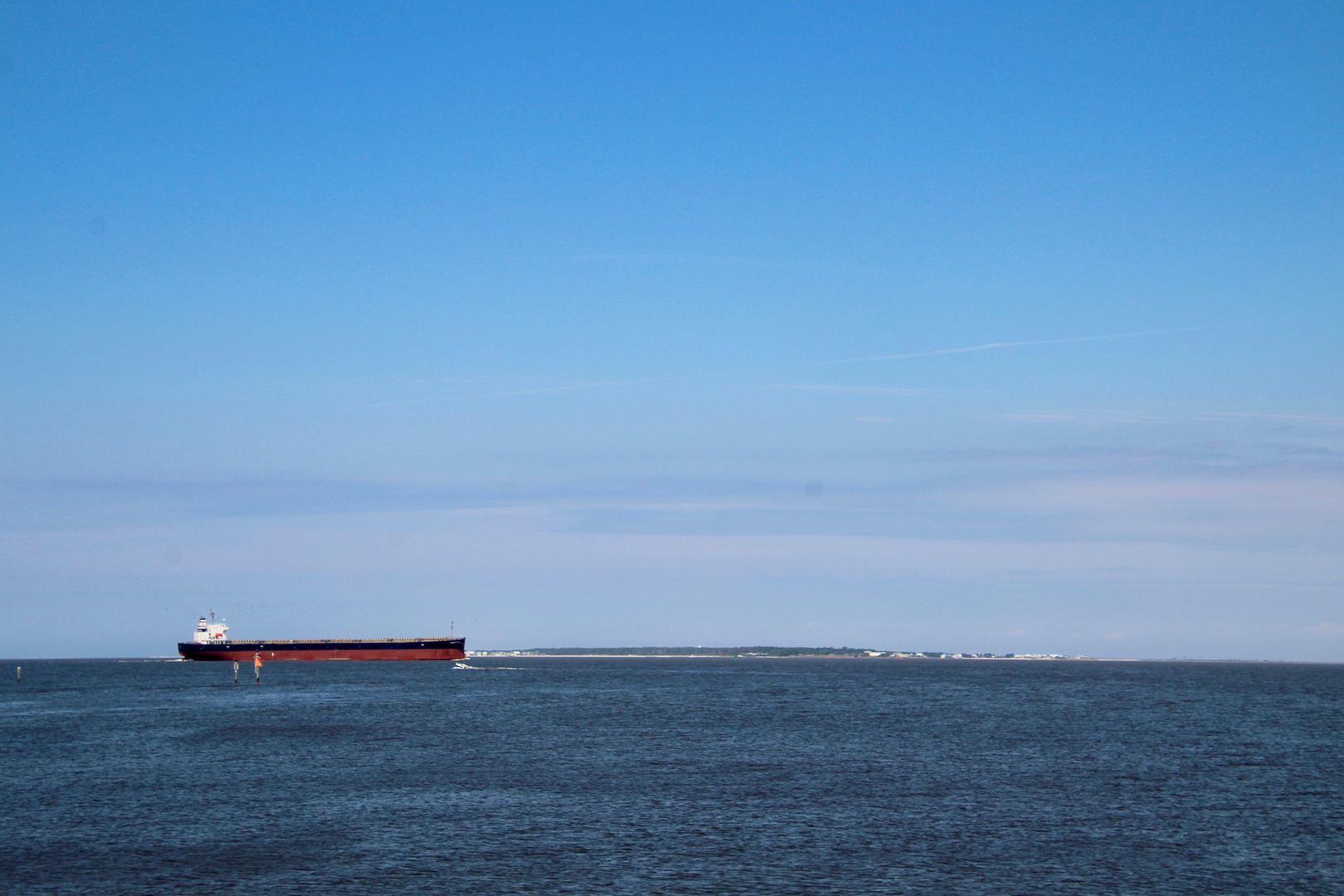


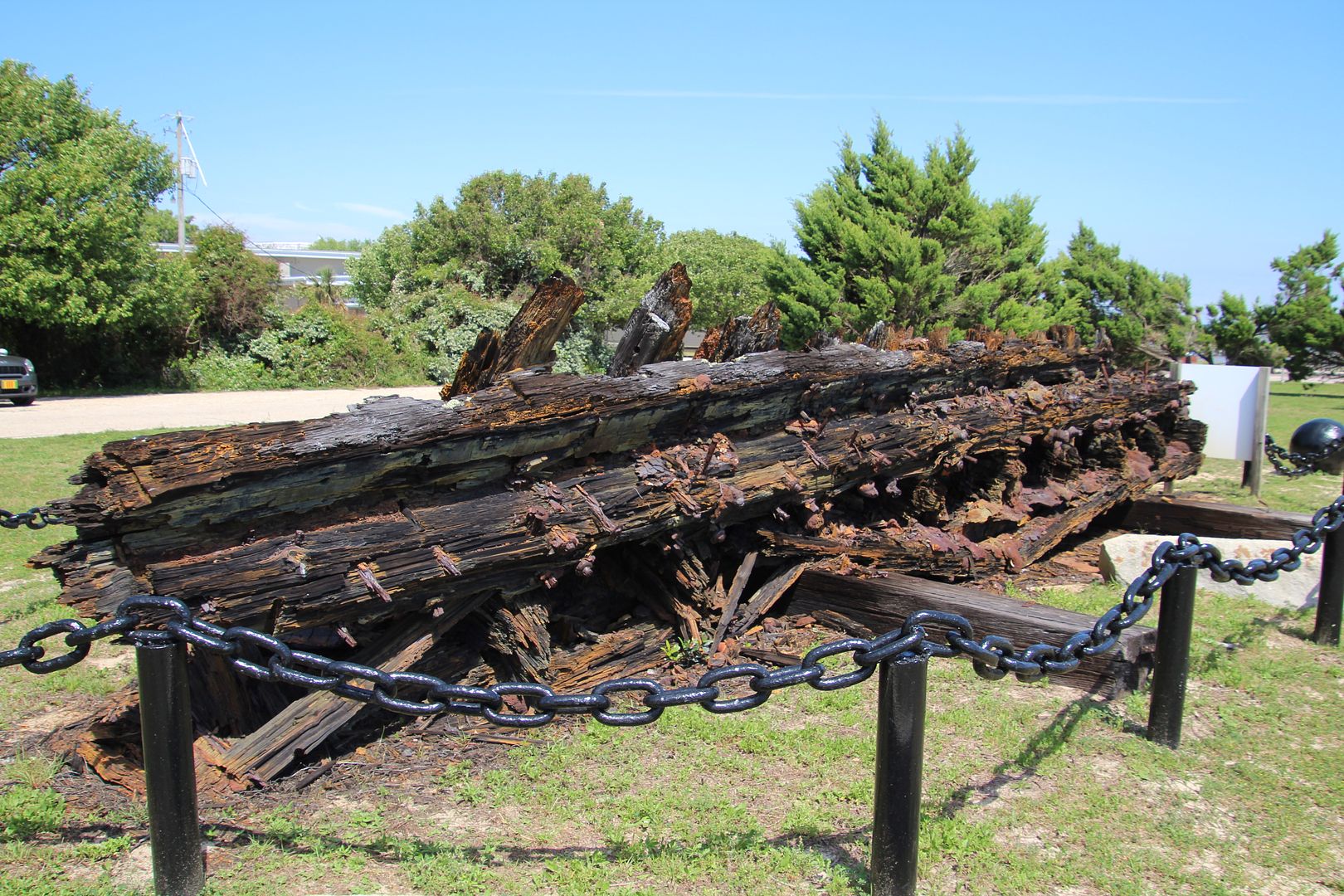
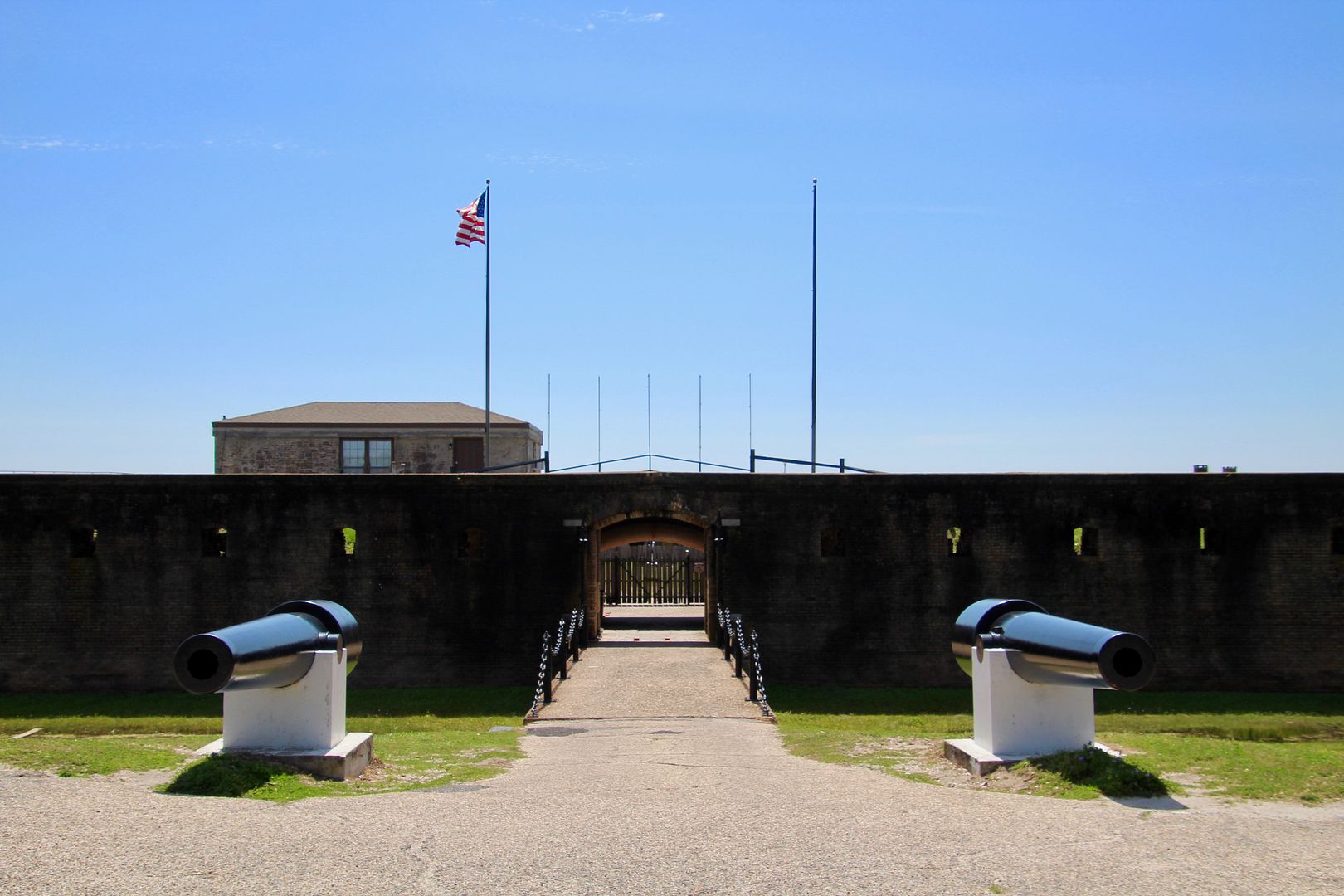
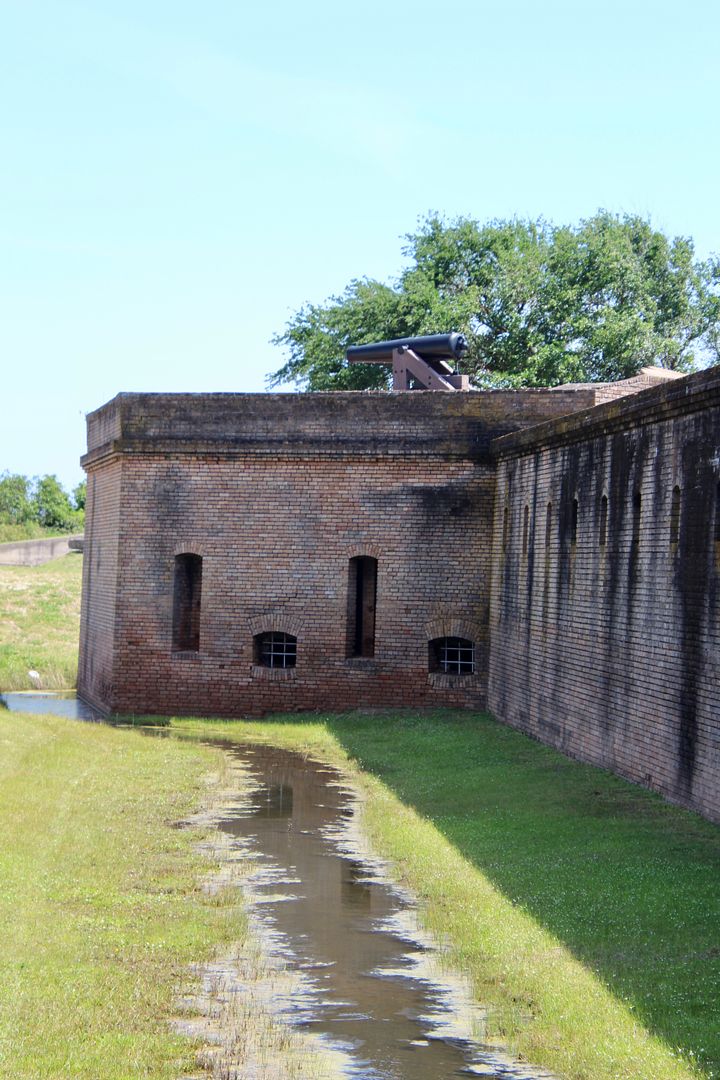
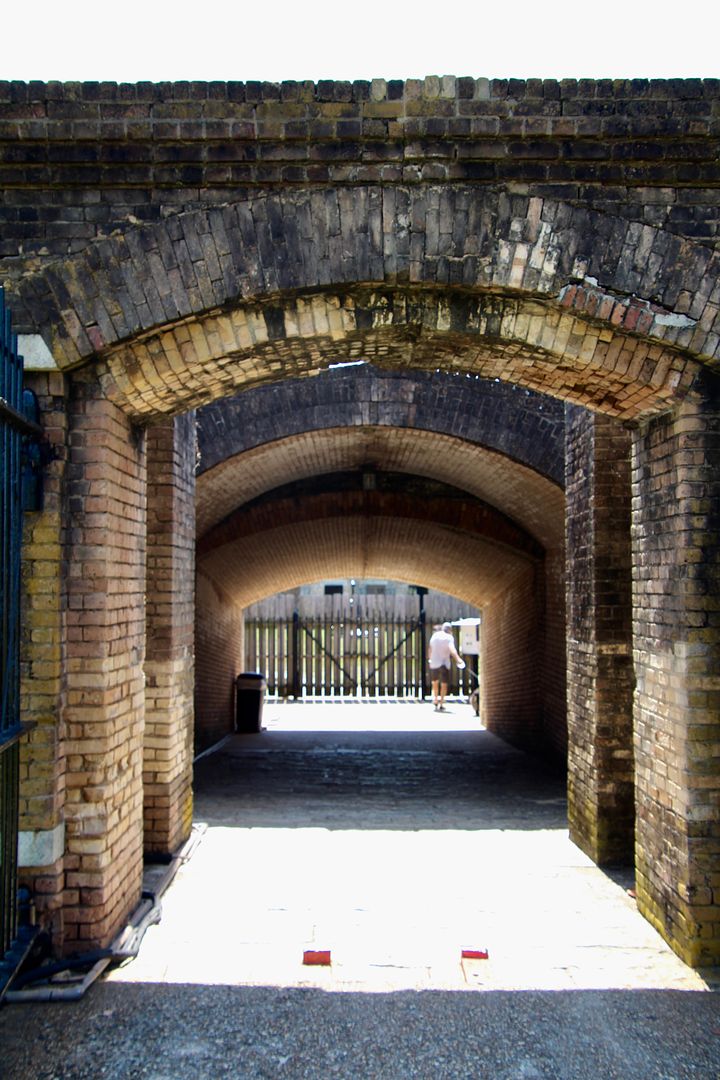

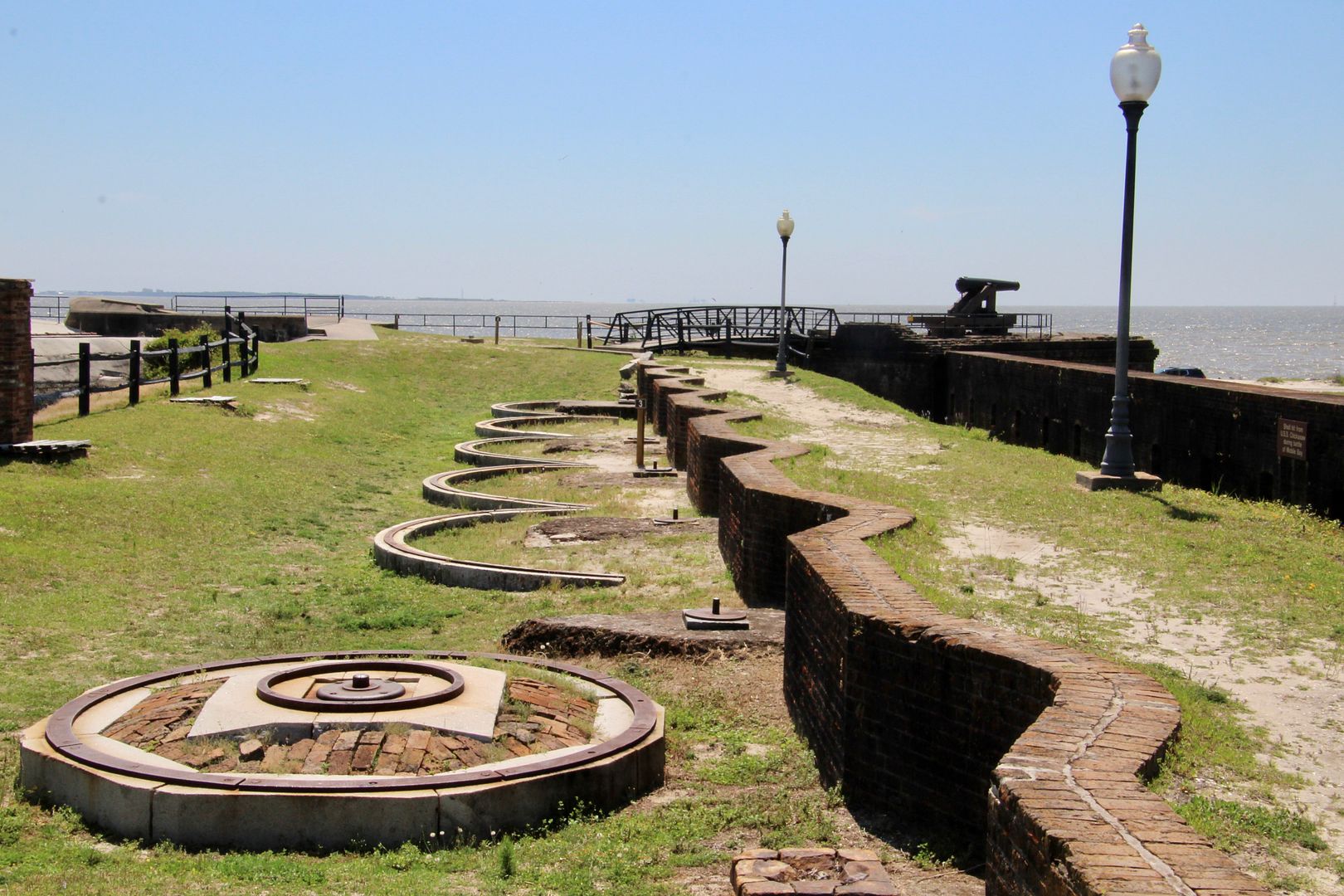

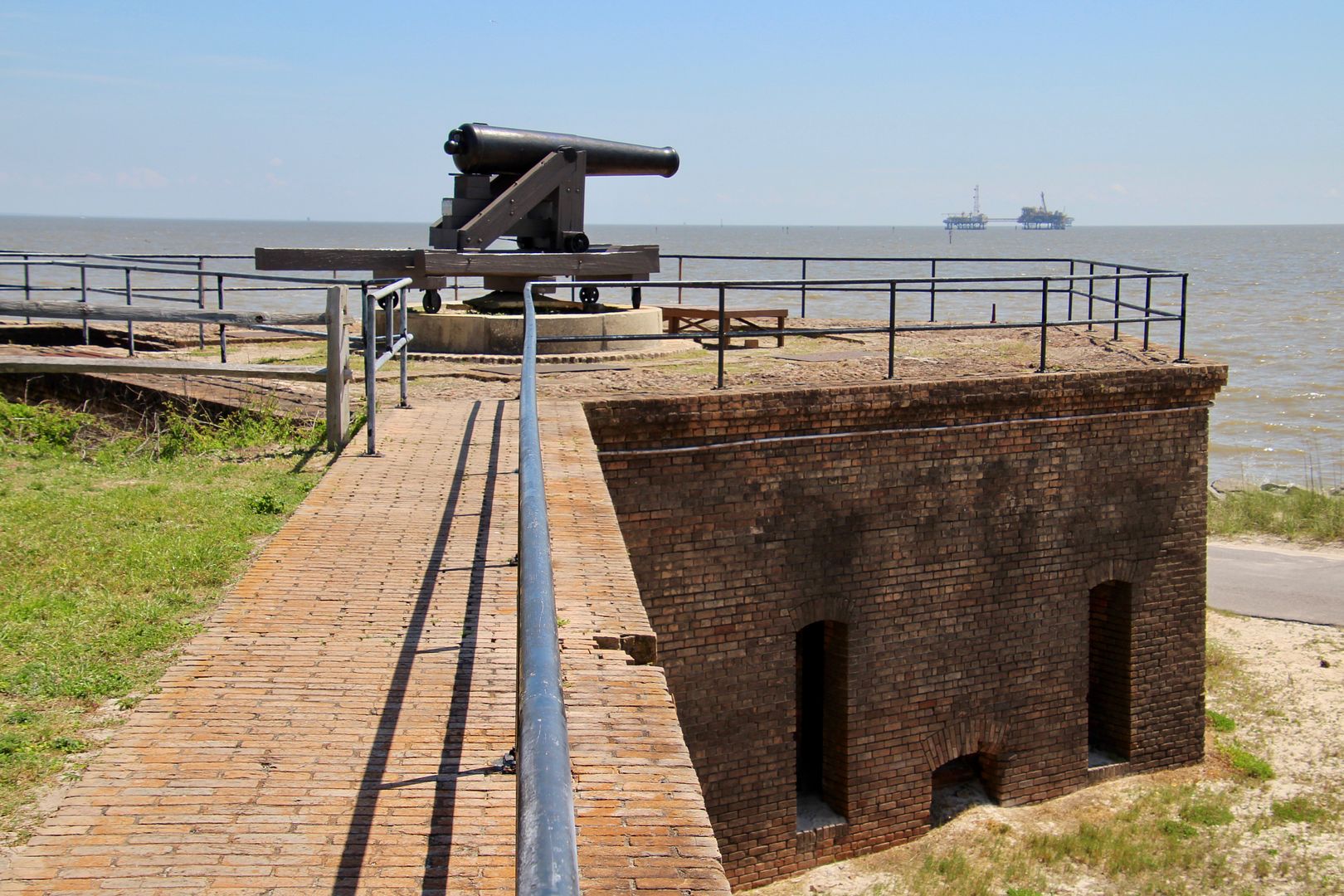
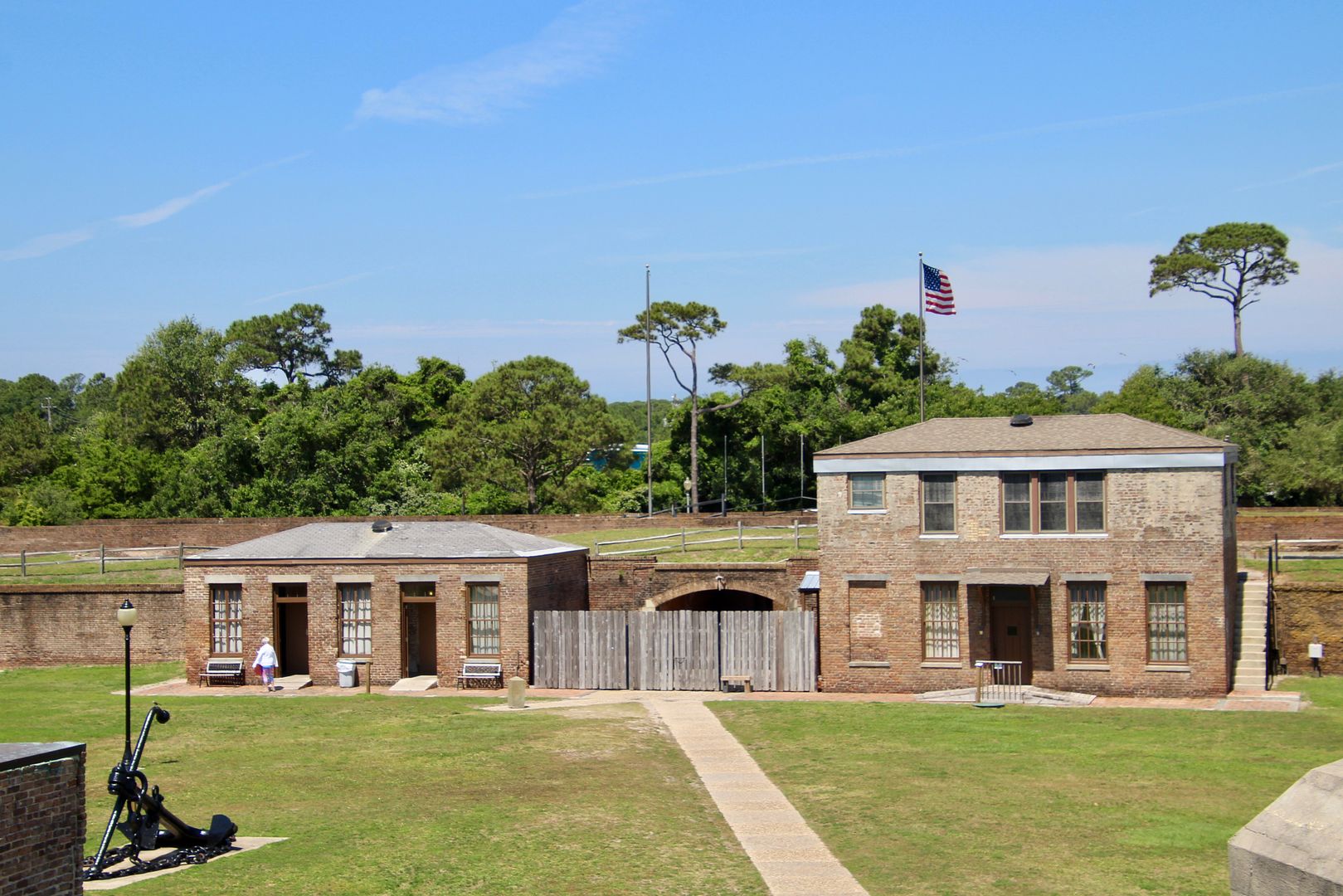
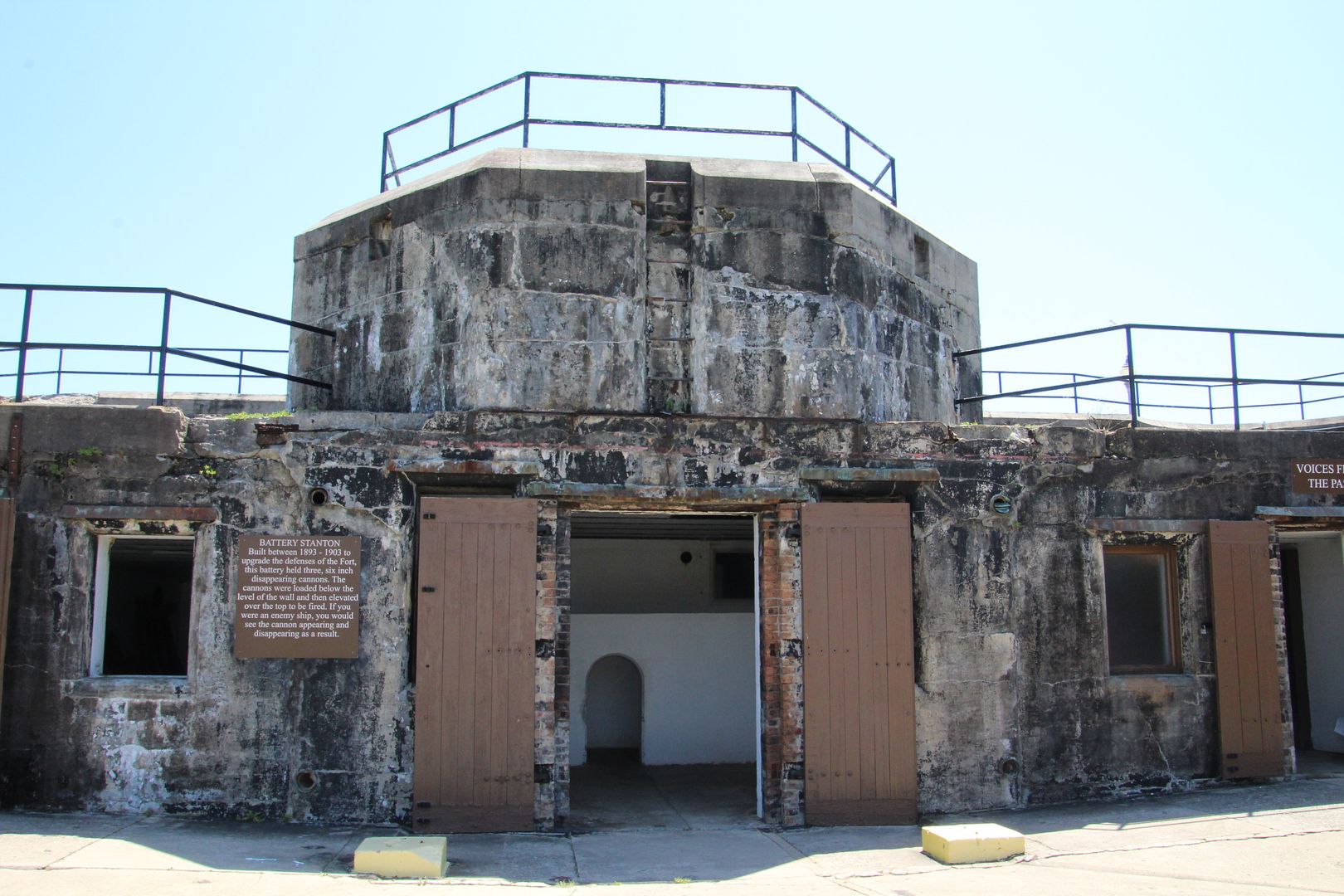
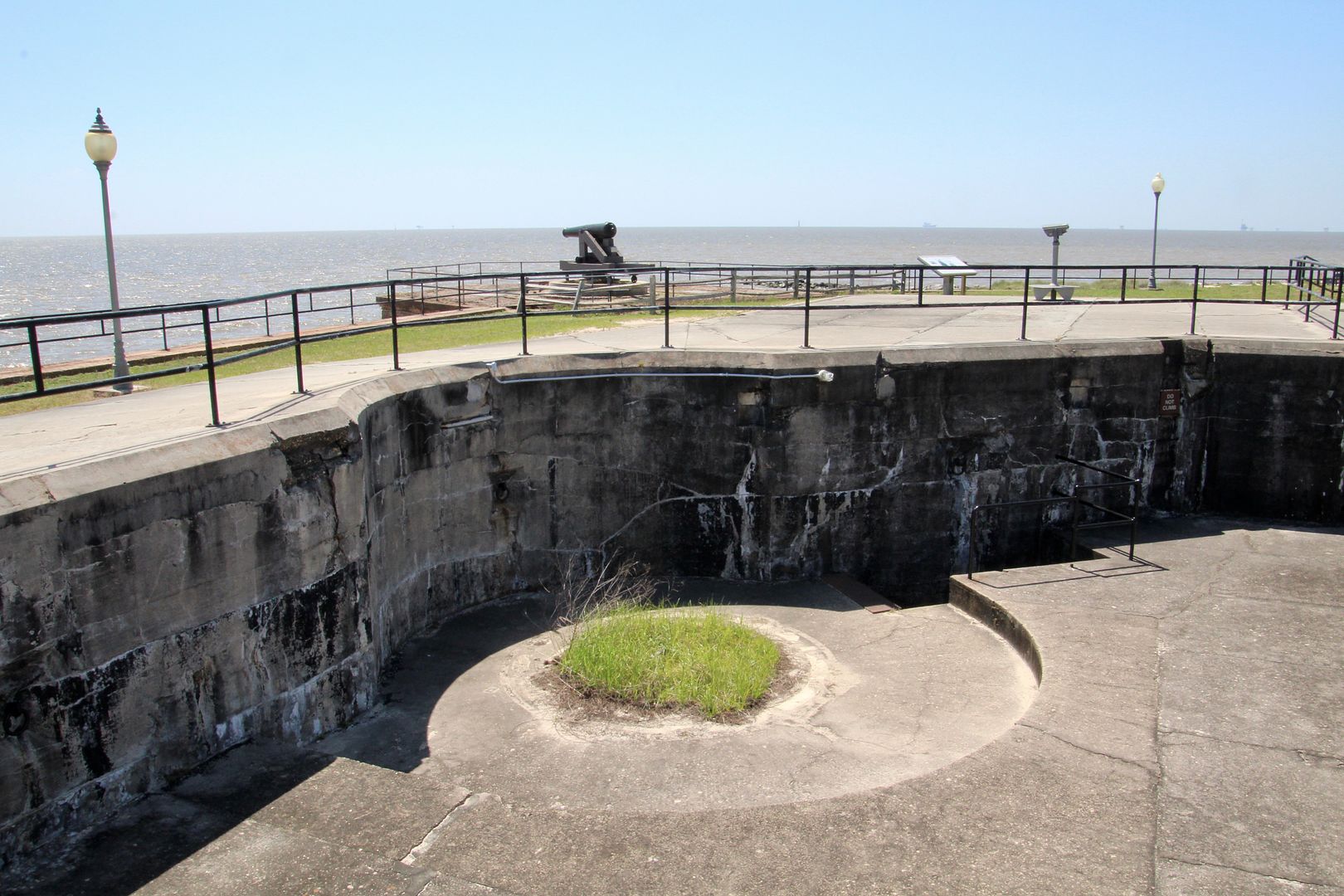
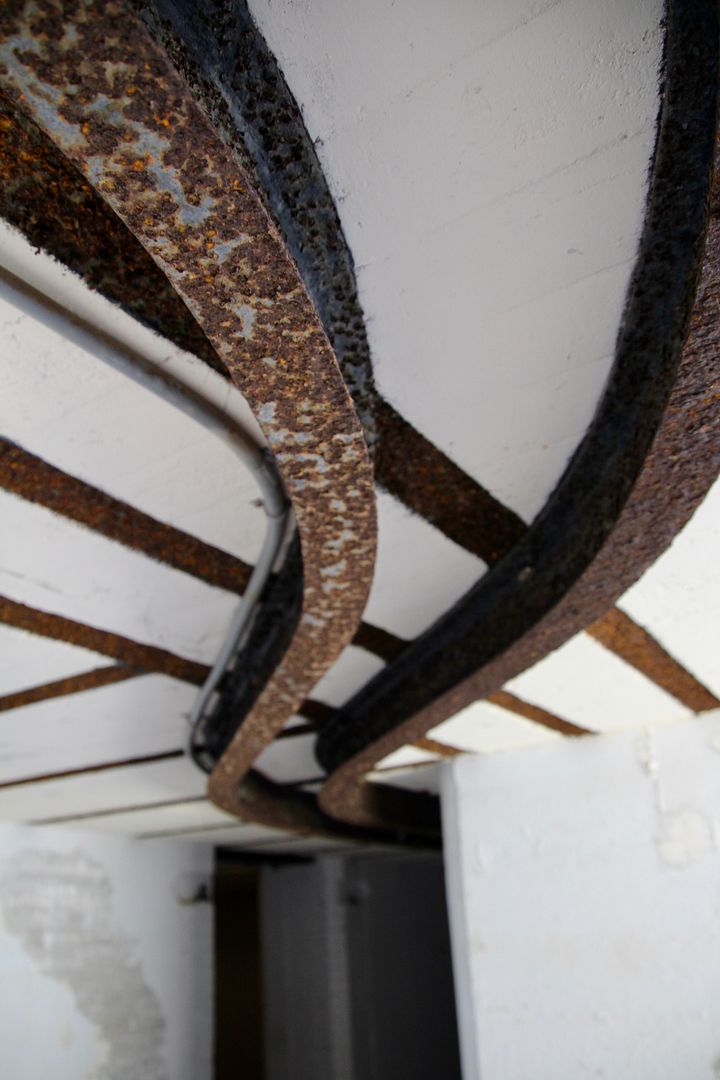
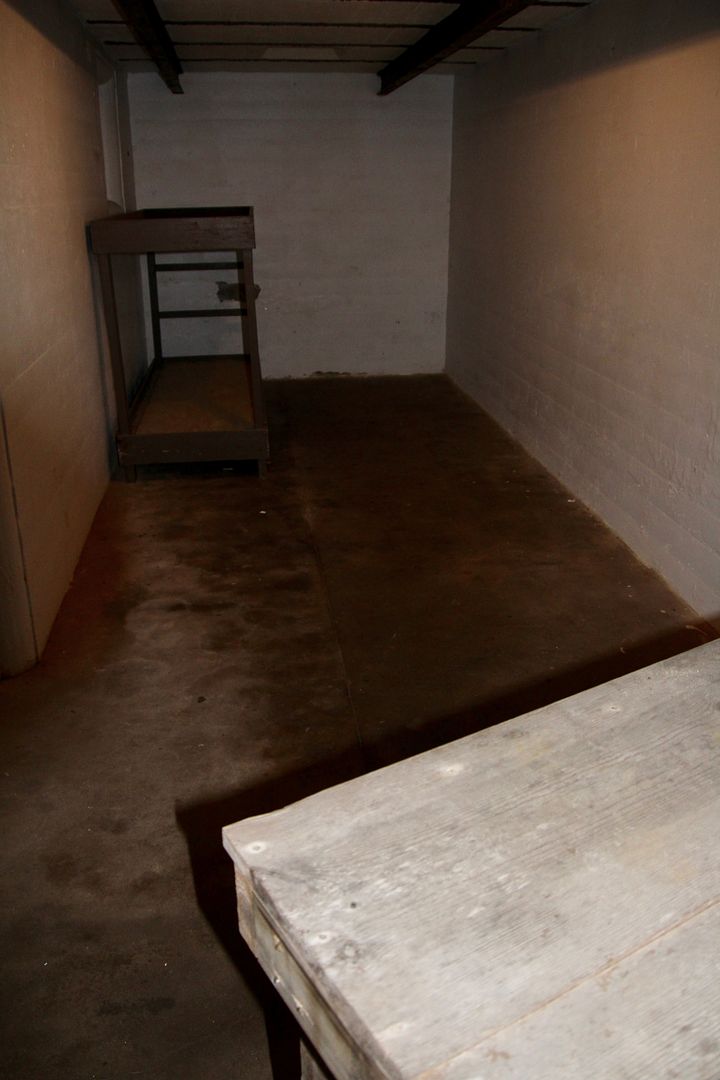
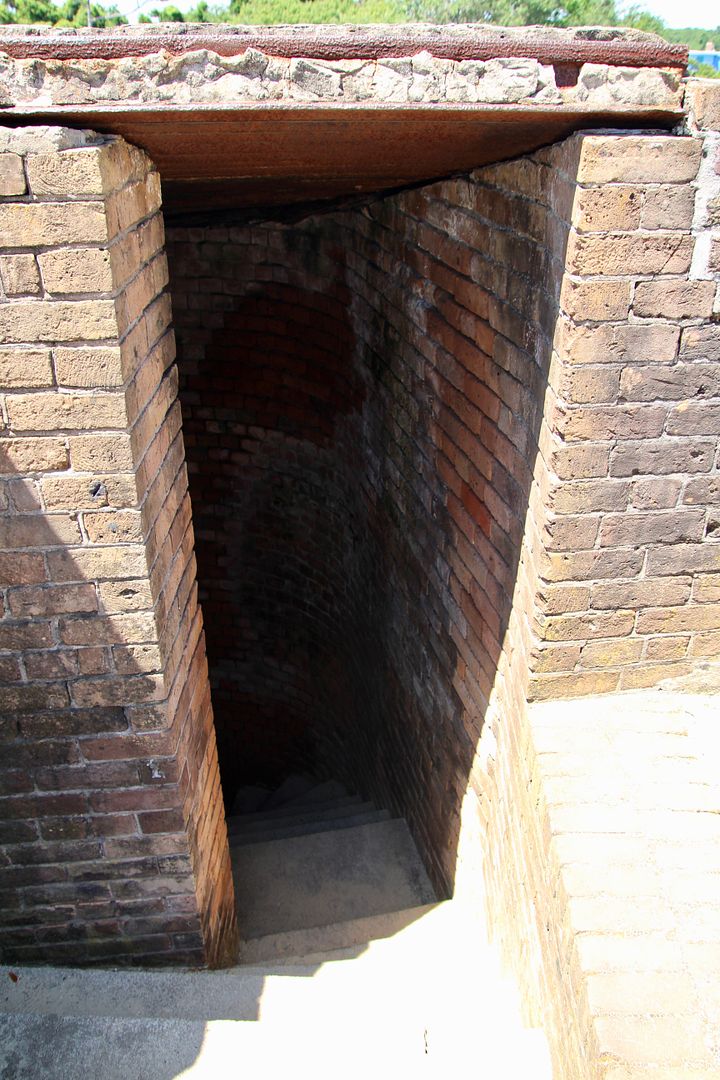
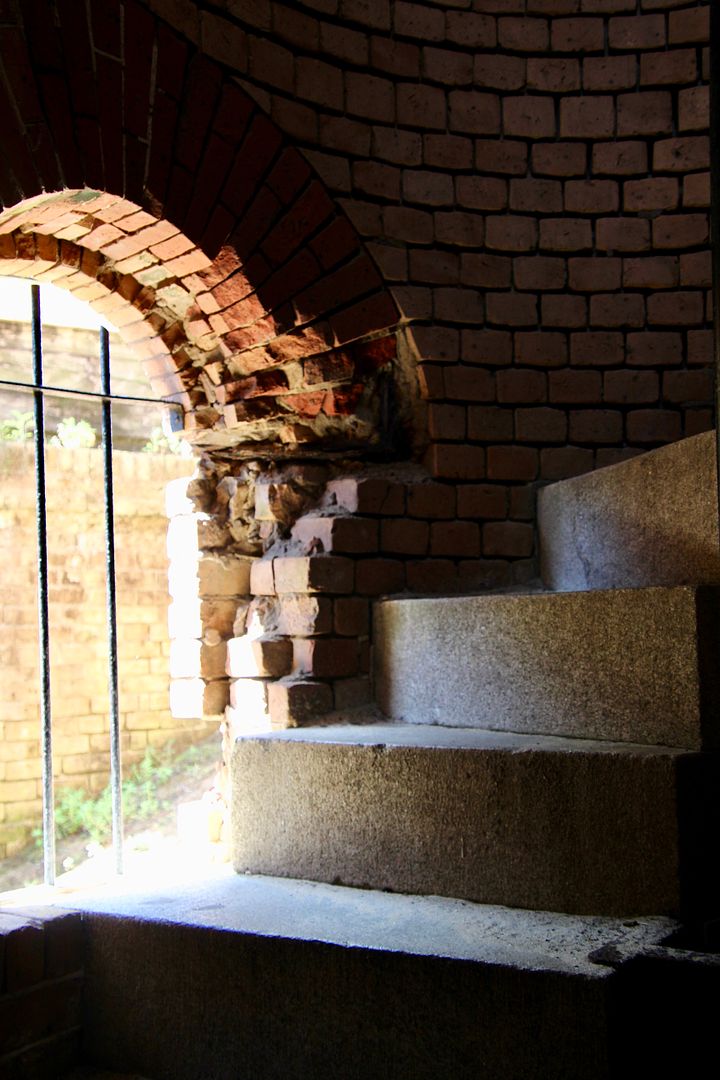
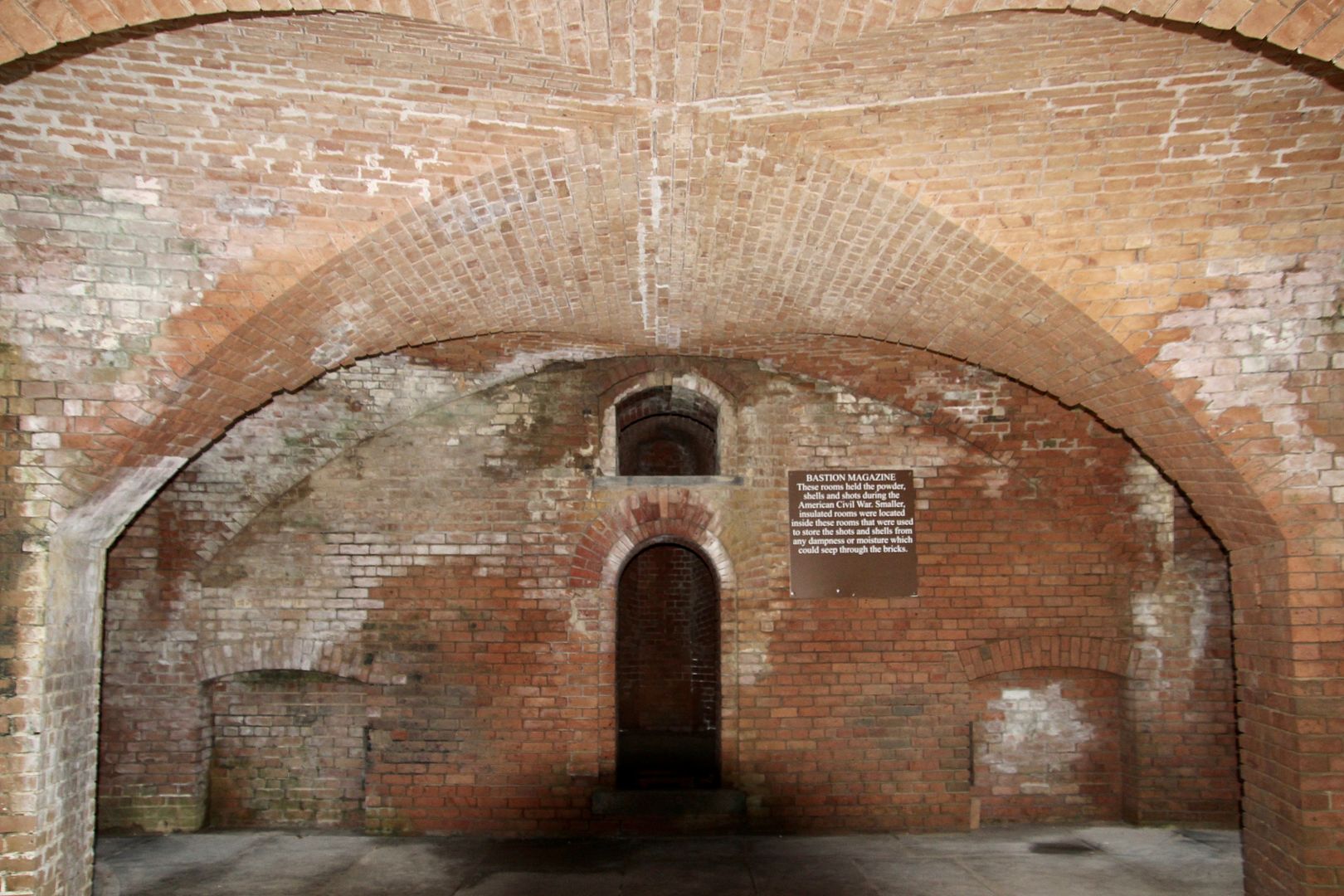
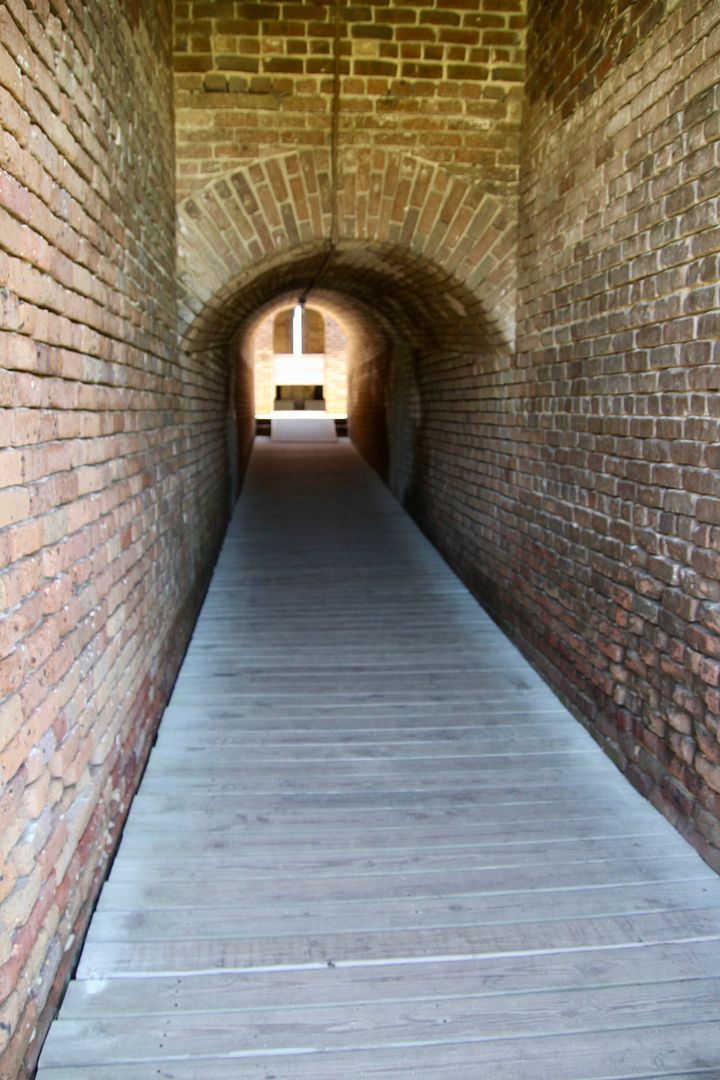

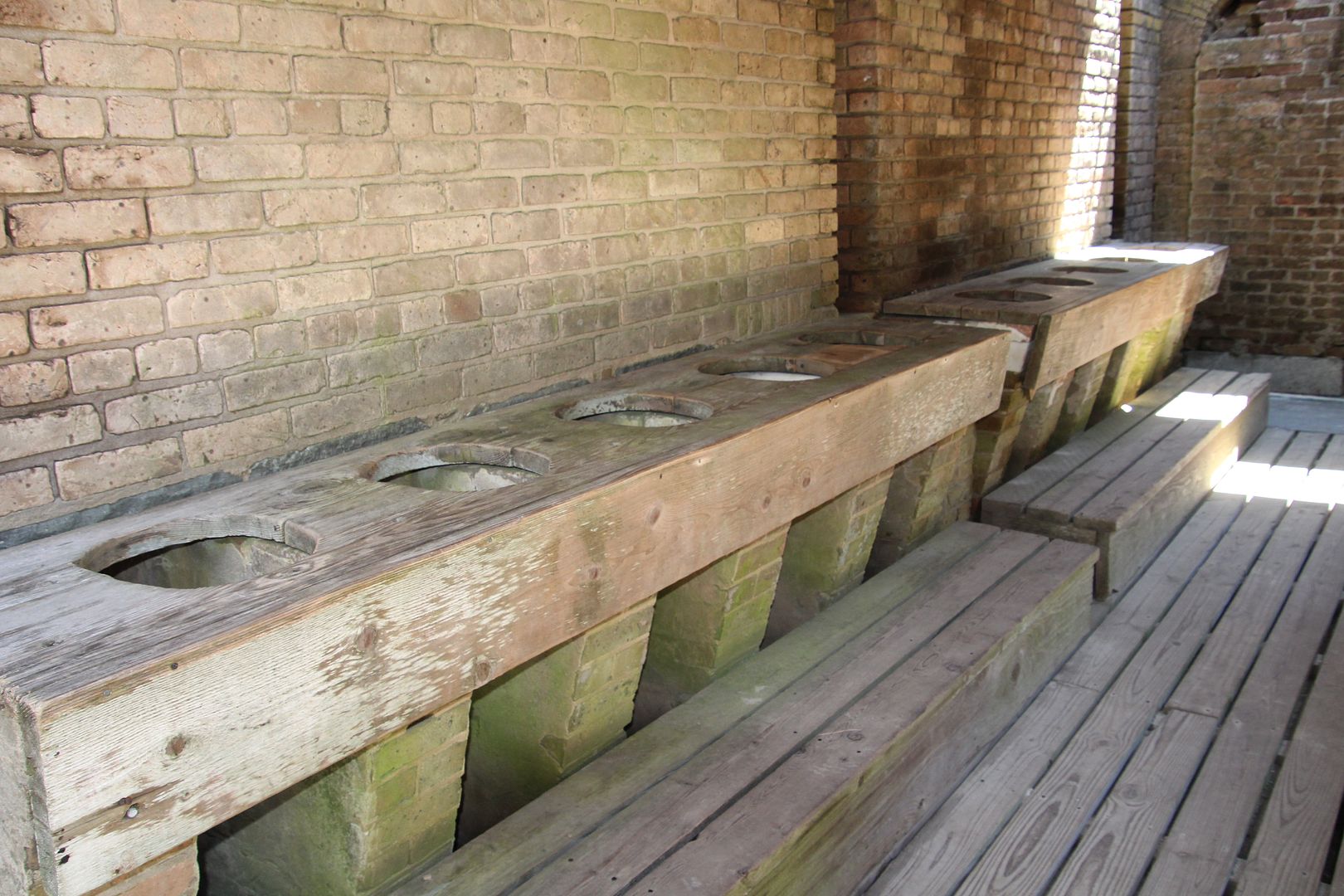
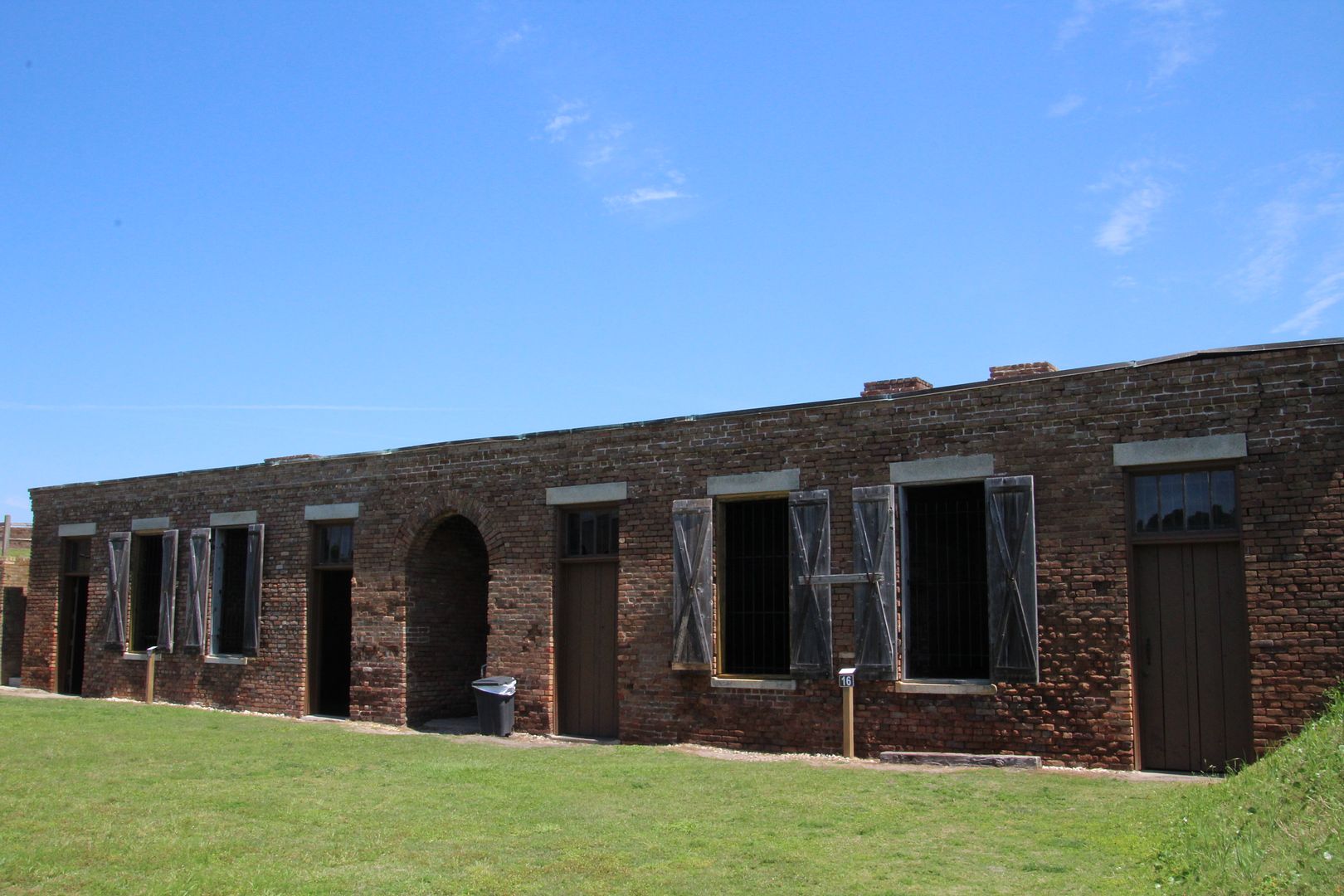
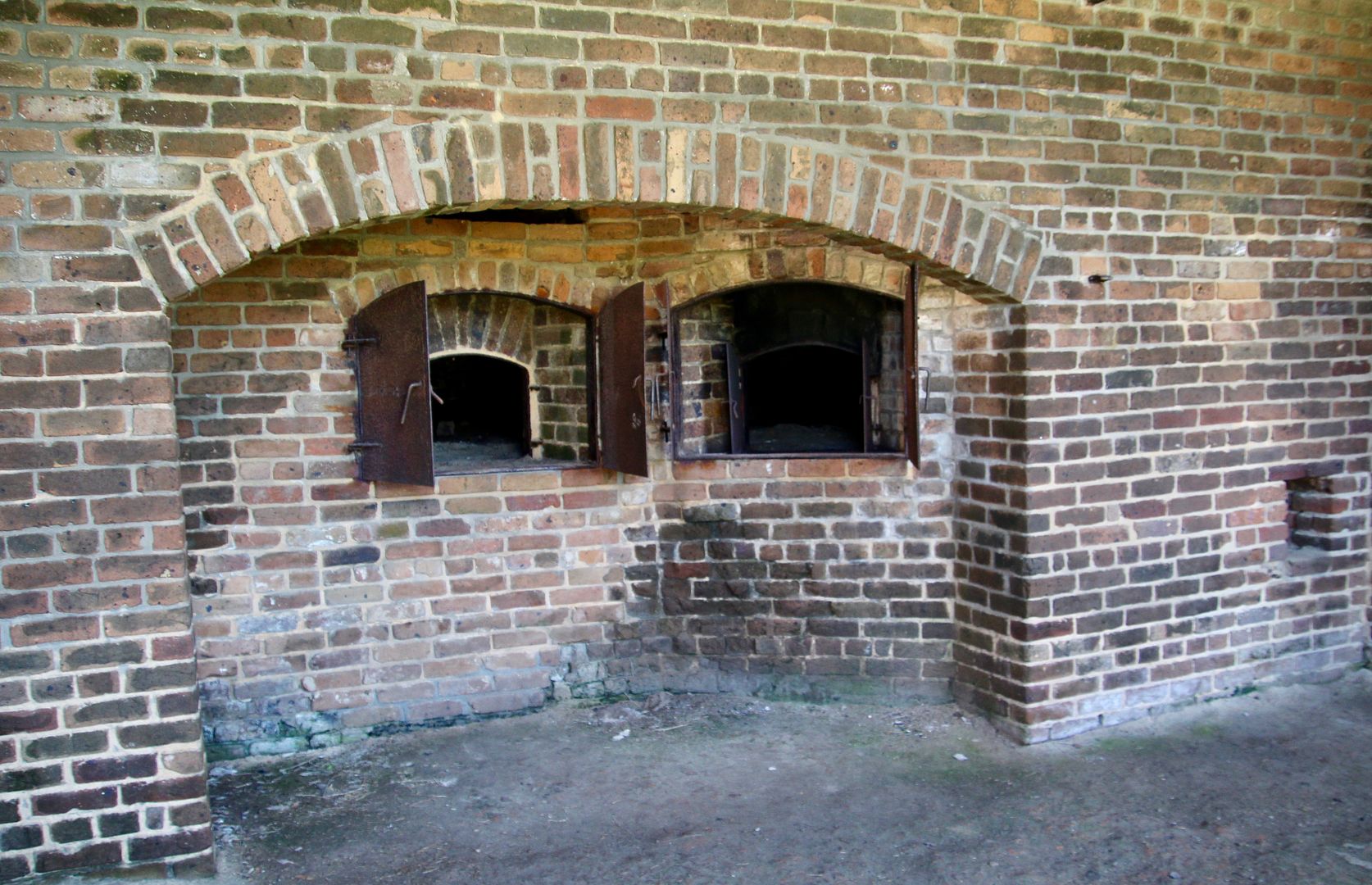
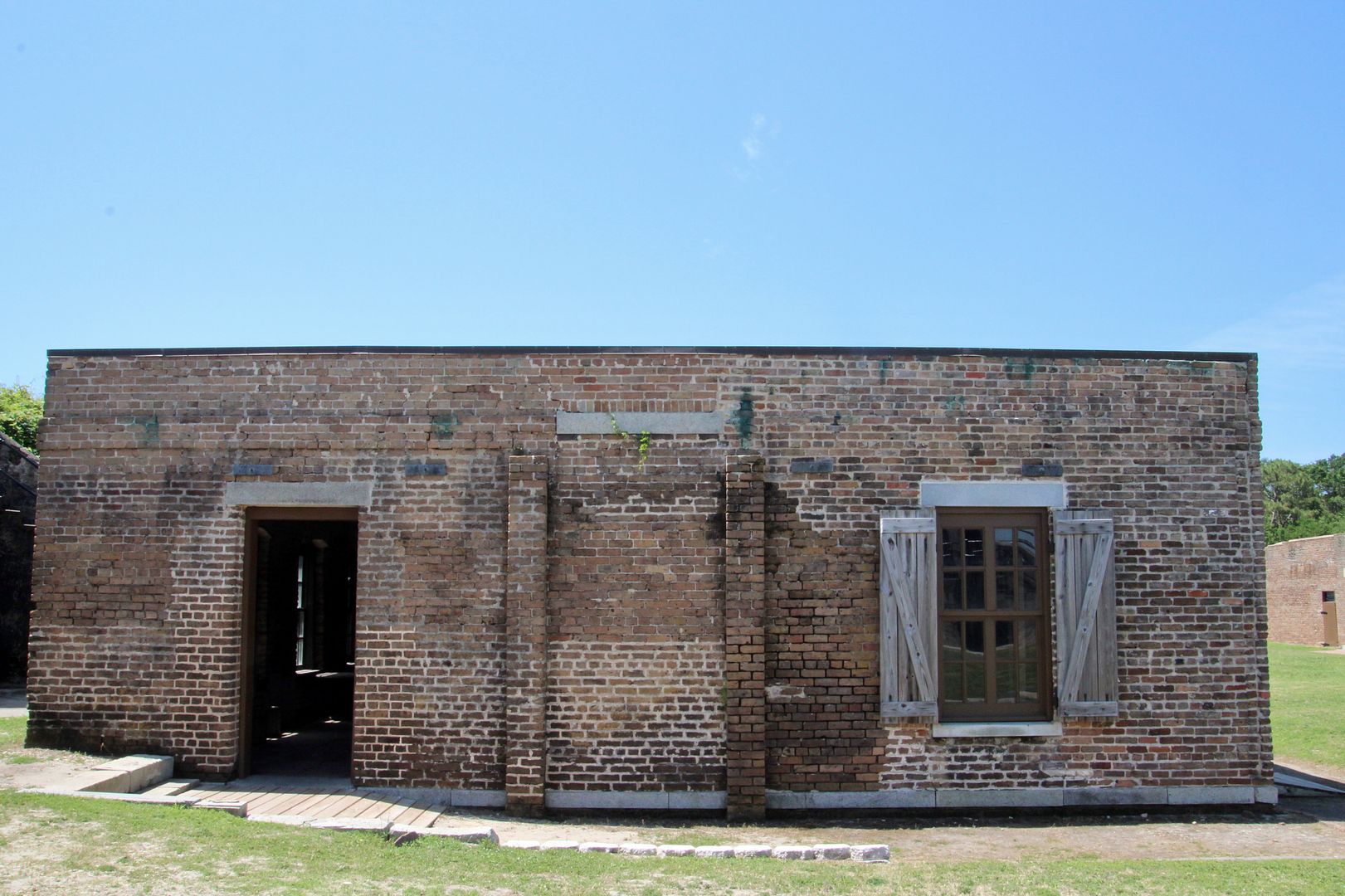
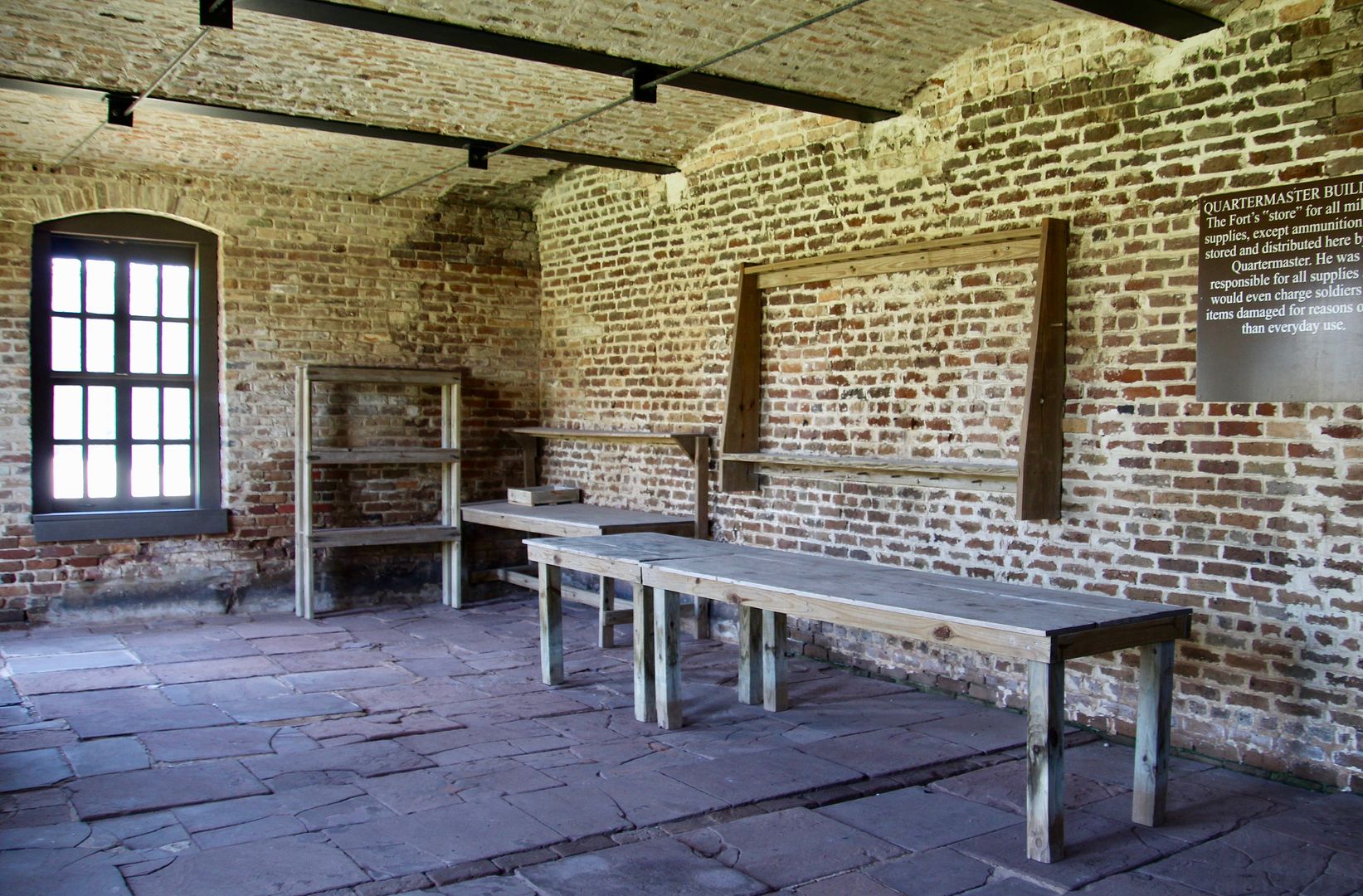
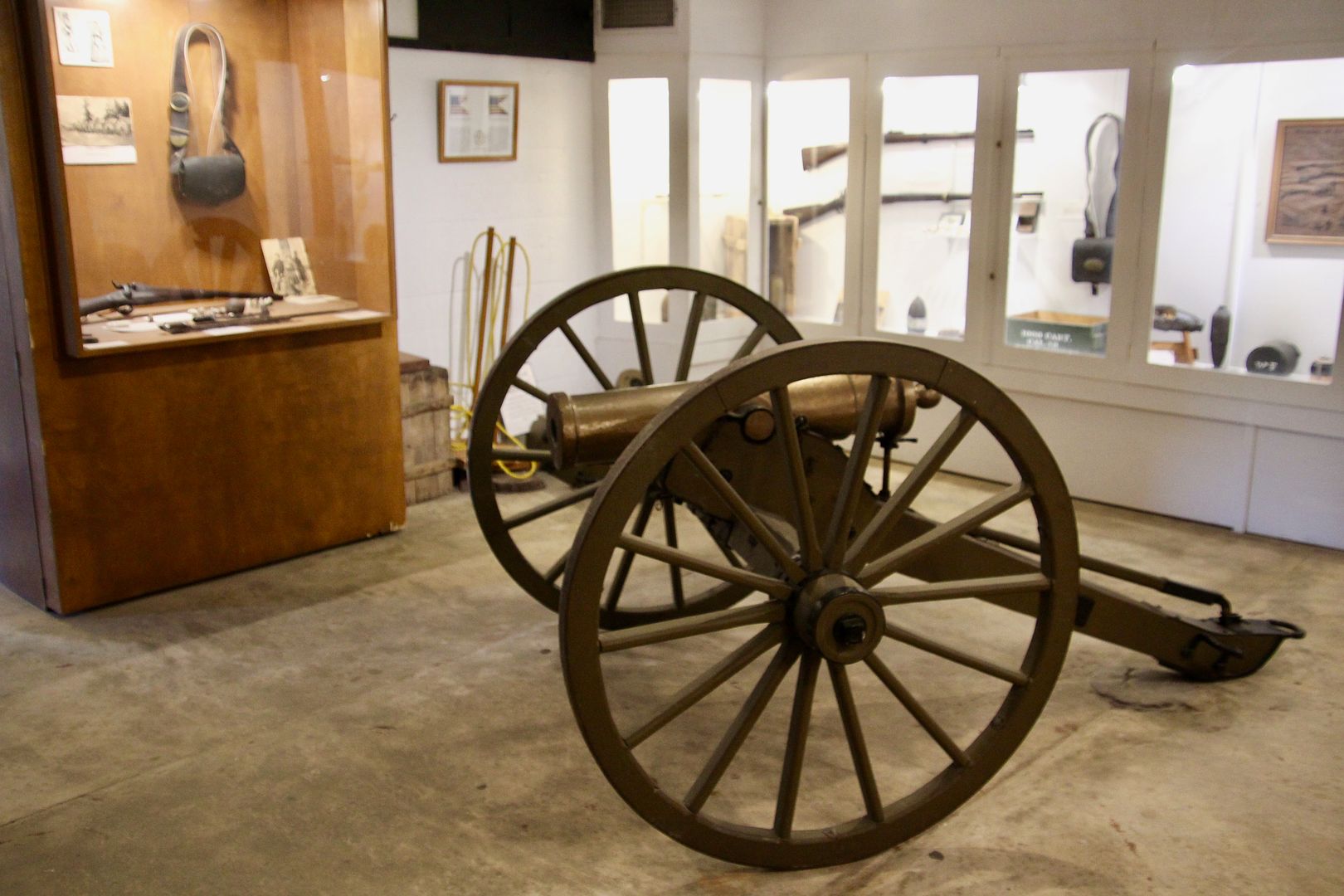
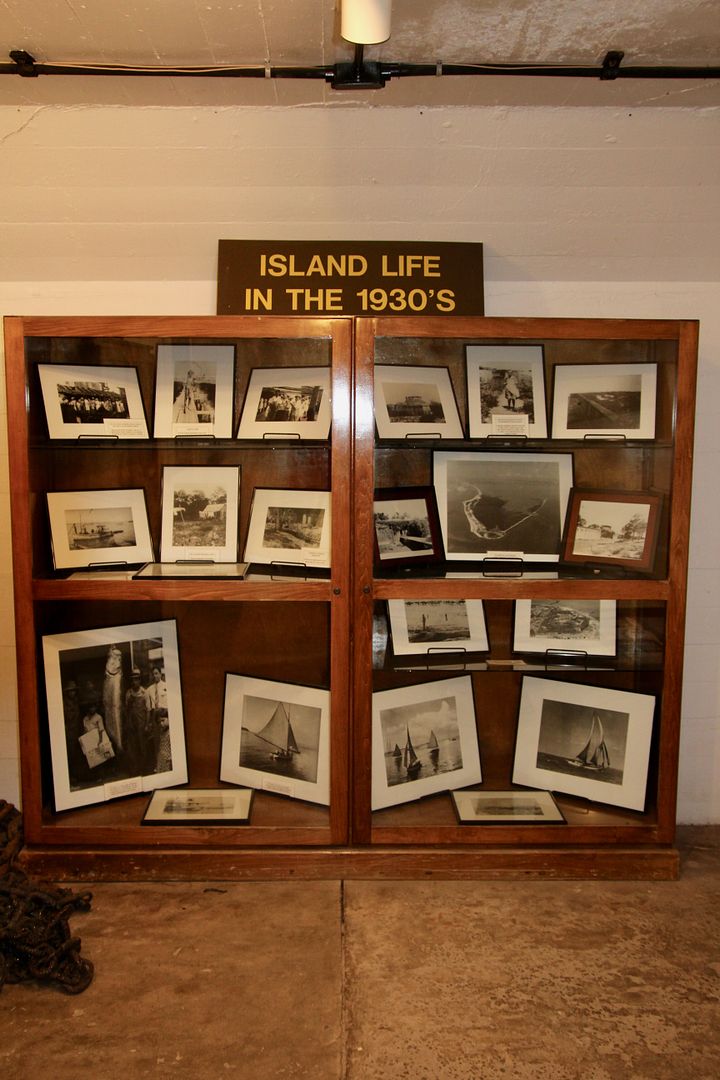


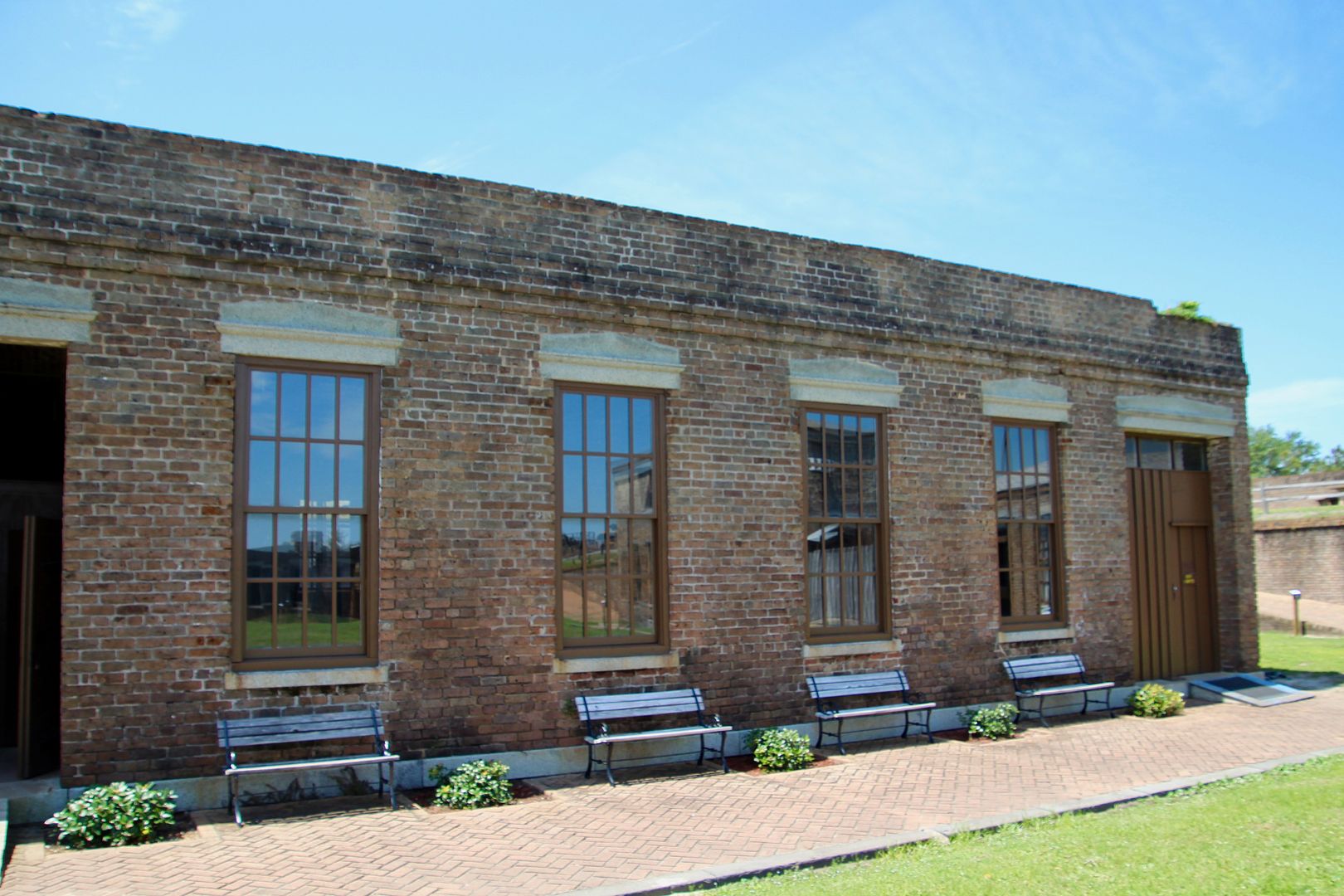
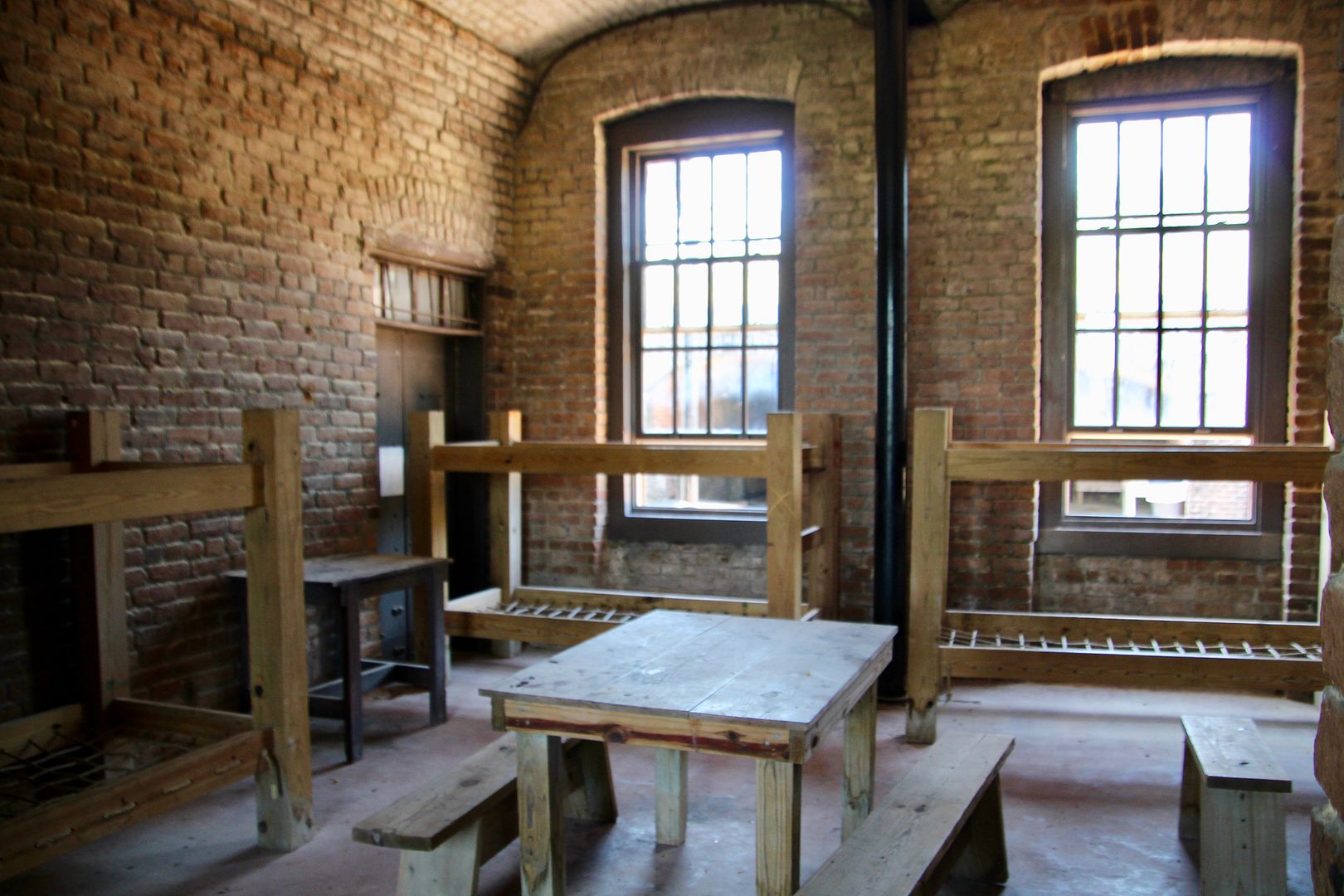
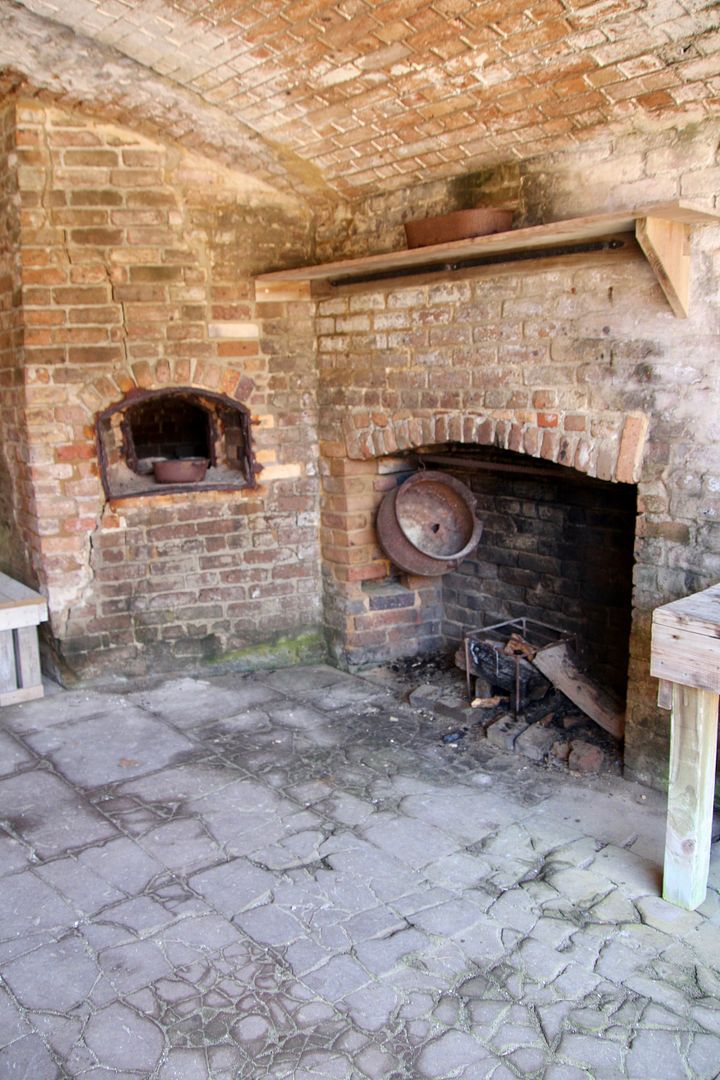

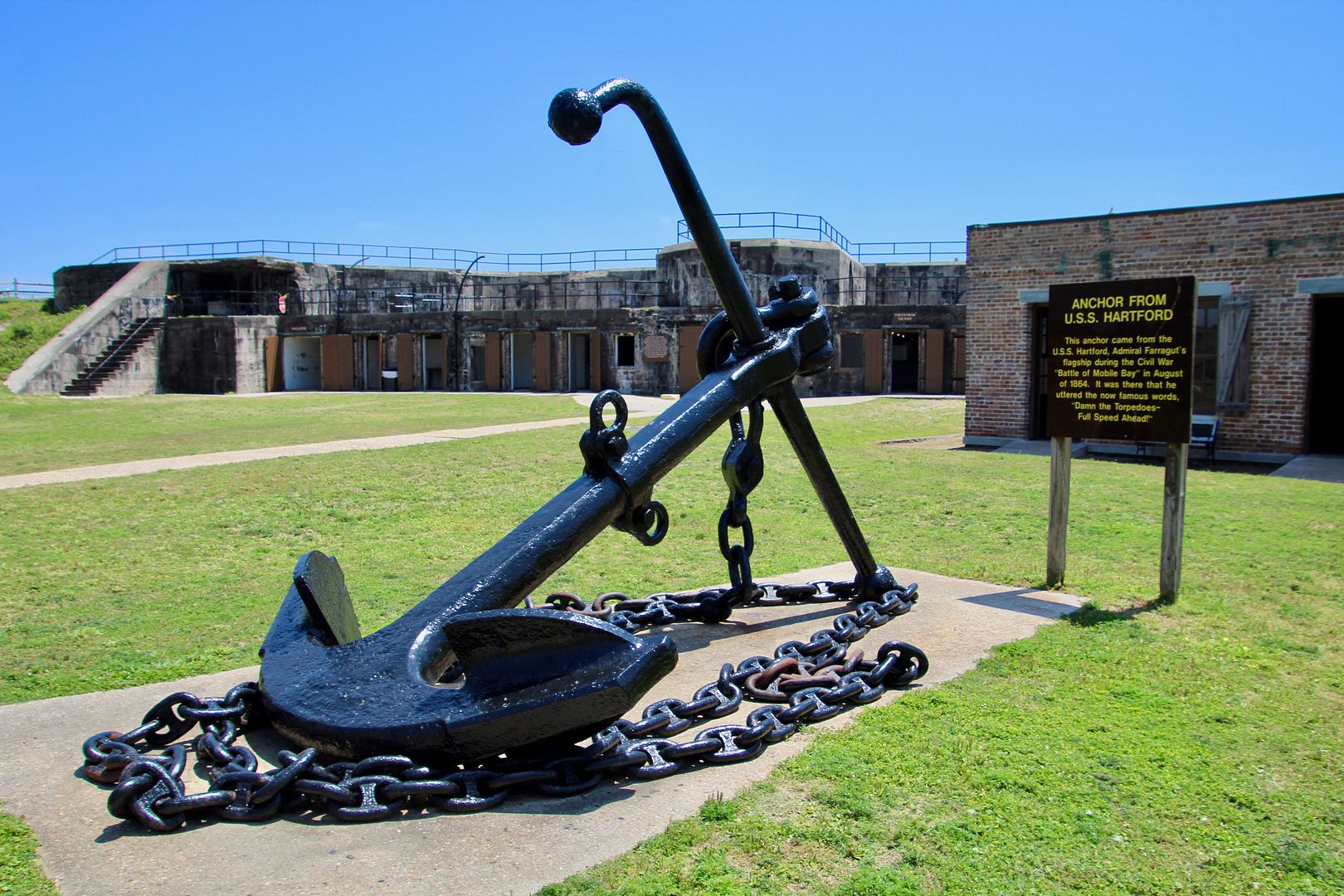
No comments:
Post a Comment